As a professional trucker, you’re no stranger to electronic logging devices (ELDs). They’ve been mandatory for most drivers since 2019. But if you’re like many drivers, your current electronic logbook might be causing more headaches than it solves.
Does this sound familiar? Some elogs for trucks lose connection right when you need to update your status. The interface is so complicated you waste precious driving time trying to figure it out. Or worse, when you call support with an urgent problem, you’re stuck on hold for hours while your delivery schedule slips away.
You’re not alone in these frustrations. Across truck stops and rest areas nationwide, drivers share similar stories of elog troubles. The good news is that ELD technology has advanced significantly since the mandate first took effect. The early rush to compliance led many companies to choose first-generation devices that barely met requirements. Today’s best systems offer what truckers actually need: reliability, simplicity, and support from people who understand the realities of life on the road.
This guide will help you find a better ELD solution — one that works reliably, saves you time, and keeps you compliant without the daily frustration. We’ll also go through how to switch providers without disrupting your operation, what to expect during roadside inspections, and how to calculate the real value of upgrading your electronic logbook.
Do you have any questions? Talk to ELD Advisor: 650-405-3372 or Request Callback
Why Many Truckers Are Switching ELD Providers
Your choice of ELD has an important impact on your operations, compliance record, and quality of life on the road. Drivers are taking a hard look at whether their current provider truly meets their needs or simply checks the compliance box. Common frustrations with low-quality logbooks that make drivers look for a new elog for trucks include:
- Lost revenue from system failures. When your system disconnects or crashes, you’re stuck at the side of the road instead of delivering loads. These technical failures translate to missed delivery windows and fewer paid miles.
- Hours wasted on troubleshooting. Low-quality systems need constant attention — time spent calling support, manually fixing logs, or dealing with glitchy updates. This comes directly out of your limited personal time.
- Compliance violations. Unreliable ELDs create inaccurate logs that trigger violations during roadside inspections. These citations cost you fines and damage your CSA score, affecting everything from insurance rates to job opportunities.
- Added stress in an already demanding job. The persistent worry about whether your ELD will malfunction during an inspection adds unnecessary anxiety to your workday. This ongoing stress affects your focus, sleep quality, and overall health.
What Separates Quality Providers from Basic Compliance Tools
There are clear differences between providers focused on reliability and customer satisfaction versus those offering bare-minimum compliance:
- Reliable connectivity keeps you moving. Top providers engineer backup connection methods that keep data flow between the device and engine, eliminating those frustrating roadside reconnection attempts.
- User-friendly interfaces save time and reduce errors. Quality providers design their apps with driver input, placing frequently-used functions front and center with large, clearly labeled buttons.
- Responsive support from industry experts. Leading elog companies staff their support centers with people who understand trucking operations. When you call with an urgent roadside issue, you reach someone who grasps the real-world consequences of your situation.
- Value-added features beyond basic compliance. The best providers include tools that deliver additional benefits, such as automated IFTA mileage tracking, engine diagnostic monitoring, and other fleet management capabilities.
If you’re consistently dealing with system disconnections, spending hours on technical support calls, facing compliance violations despite careful logging, or struggling with a confusing interface, it might be time to explore more reliable alternatives.
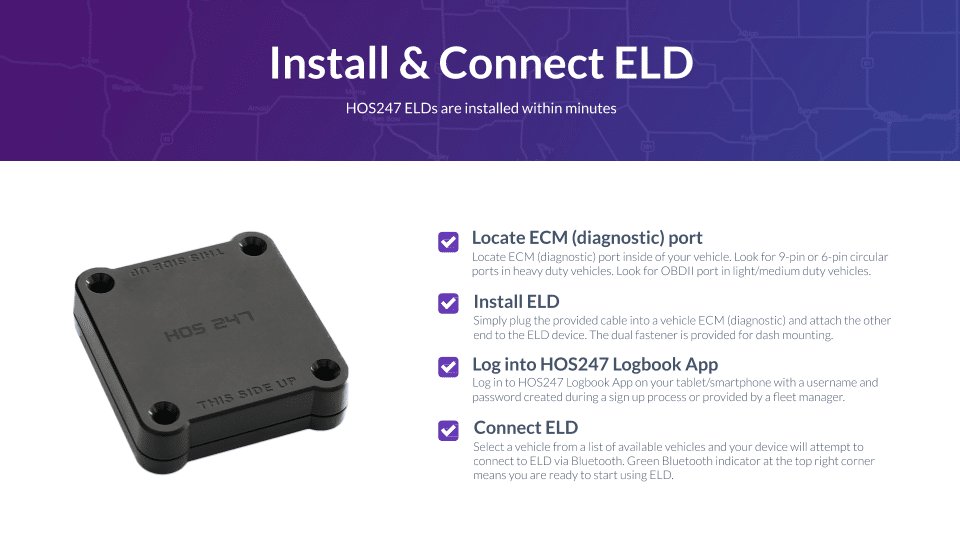
HOS247’s Reliable Elog for Truck Drivers
At HOS247, we’ve built our ELD solution specifically to address the common pain points truckers experience with lower-quality providers. By focusing on reliability, usability, and responsive support, we’ve created a system that makes compliance simpler and less stressful for drivers and fleet managers alike.
User-Friendly Software
Our software delivers a user experience built with real truckers in mind:
- Simple and quick navigation. We’ve designed our interface so drivers can find what they need quickly without digging through confusing menus.
- Intuitive fleet management portal. Our web-based dashboard gives fleet managers complete visibility of their operation in one place. Track driver status, monitor compliance, review logs, and manage unassigned driving time through a single, easy-to-navigate screen.
Reliable Hardware You Can Count On
Our ELD hardware component provides consistent performance throughout your trips:
- Durable construction. We’ve built our hardware to withstand the vibration and temperature variations common in truck cabs, ensuring durability.
- Strong, consistent connectivity. Our system maintains reliable Bluetooth connections without the frequent drops.
- Quick, straightforward installation. Most drivers complete our physical installation in under 15 minutes without special tools or expertise.
- Comprehensive warranty protection. We stand behind our hardware with a one-year warranty for your peace of mind.
Support From People Who Understand Trucking
Perhaps what sets us apart most is our approach to customer support:
- Available when you need us. We provide support seven days a week, because we know trucks don’t just operate Monday through Friday.
- Our call-back guarantee. If you get disconnected during a support call, we’ll call you back promptly — you don’t restart at the end of the queue.
- True industry knowledge. Our support staff have actual trucking industry experience and understand the real-world situations drivers face daily.
- Communication without barriers. Our multilingual team can assist in English, Spanish, Russian, and Polish to facilitate communication.
Flexible Plans For Your Operation
Whether you’re an owner-operator or manage a fleet, we offer options that adapt to your specific needs:
- Freedom without long-term commitments. We offer month-to-month or yearly payment options without locking you into multi-year contracts.
- Optional features that add value. Our GPS tracking capabilities improve dispatch coordination and provide valuable data for route optimization. Additionally, our automated IFTA mileage tracking reduces your quarterly tax filing paperwork.
- Clear, transparent pricing. We present our costs clearly without hidden fees or surprise charges.
Why Drivers Choose HOS247
Truckers across North America have switched to our electronic logging solution because it solves the real problems they face daily. Our focus on reliability means fewer roadside headaches and compliance violations. Our intuitive interface saves valuable time during busy days. And when questions do arise, our responsive support team is ready to help.
We understand that your electronic logbook isn’t just about compliance — it’s a critical business tool that impacts your daily productivity and peace of mind. That’s why we work as hard as you do to offer a quality solution.
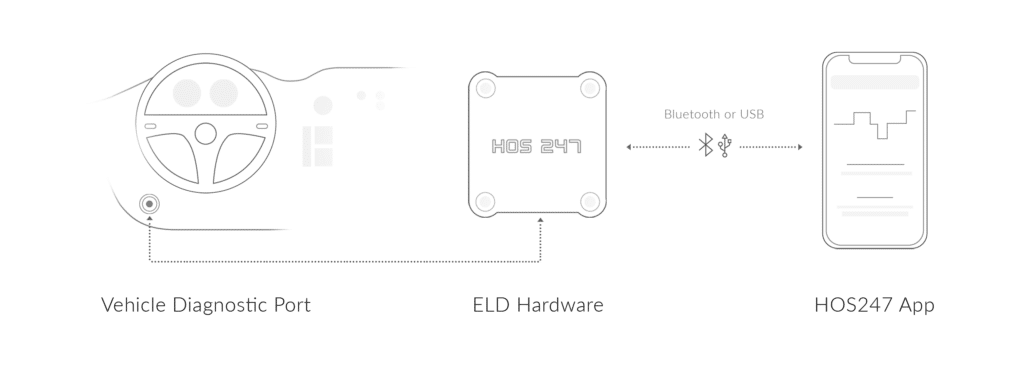
How to Switch ELD Providers Without Disruption
Changing your elog provider might seem daunting — especially if you’re in the middle of a busy season. However, with proper planning, you can make the transition smooth and minimize downtime. Here’s a broken down approach to keep operation running efficiently during the switch.
Preserving Your Logs
Before making any changes to your ELD system, securing your historical log data is essential:
- Download your previous 6 months of logs. The FMCSA requires you to maintain records for this period, so begin by exporting all your logs from your current provider’s portal. Save these as PDF files on your computer or cloud storage for easy access.
- Create physical backup copies. Print hard copies of at least your most recent 8 days of logs to keep in your truck during the transition period. These will be crucial if you’re inspected before your new system is fully operational.
- Document any current issues. Take screenshots or photos of any existing violations or system malfunctions. This documentation can be valuable if you need to demonstrate that problems originated with your previous system.
- Request a data transfer from your provider. Some ELD companies can provide your complete log history in a format that can be imported by your new provider. This service isn’t universal but is worth asking about.
Remember: The FMCSA holds you responsible for maintaining continuous records regardless of which electronic logging system you use. Never risk losing this critical compliance data during a transition.
Training Your Team
If you manage multiple drivers or have team operations, proper training ensures everyone can use the new system effectively:
- Utilize manufacturer resources. Most quality ELD providers, including HOS247, offer comprehensive training resources. Share these with your team in advance.
- Create a quick reference guide. Develop a one-page “cheat sheet” covering the most common functions drivers will need. Focus on daily login procedures, status changes, and inspection modes.
- Conduct practice scenarios. Before fully switching, run through common situations drivers will encounter, including logbook inspections, personal conveyance, and dealing with unassigned driving time.
Timing the Switch
Strategic timing can significantly reduce the stress of transitioning to a new system:
- Plan for scheduled downtime. Weekends or reset periods provide natural opportunities to install and test new equipment without rushing. Set aside a couple of hours for the installation and initial system testing.
- Keep support contact information handy. Have your new provider’s technical support phone number readily available during installation and the first few days of operation.
- Avoid critical delivery periods. Don’t schedule your switch immediately before your highest-priority or time-sensitive loads.
- Consider a phased rollout. If managing a fleet, consider transitioning vehicles in batches rather than attempting to switch everyone simultaneously.
Making the Transition Work for You
With proper planning and preparation, switching to a better provider doesn’t have to disrupt your operation. By following these steps, you can achieve a smooth transition that minimizes stress and downtime. The short-term investment in a careful transition process pays in the long term through improved operations and a better experience for everyone in your operation.
The ELD Mandate and Elogs for Trucks Rules
The path to electronic logging has been a gradual progression:
- 2012: Congressional Authorization. Congress passed the “Moving Ahead for Progress in the 21st Century” bill (MAP-21), which included provisions requiring the FMCSA to develop regulations mandating electronic logbooks.
- 2015: Final Rule Publication. After years of development and public comment periods, the FMCSA published the final ELD rule, establishing technical specifications and compliance timelines.
- December 2017: Initial Implementation. The first compliance deadline required carriers to use either automatic onboard recording devices (AOBRDs) or ELDs meeting the new specifications.
- December 2019: Full Compliance. The final deadline arrived, requiring all carriers previously using AOBRDs to transition to fully compliant electronic logging systems.
This phased implementation gave the industry necessary time to adapt to the new requirements. As with any new technology, early solutions focused primarily on meeting compliance standards, while newer systems have increasingly incorporated driver experience improvements based on real-world feedback.
Today, commercial motor vehicle operators must use ELDs if they meet certain criteria:
- Vehicle specifications. The rules apply to commercial motor vehicles with a gross vehicle weight rating of 10,001 pounds or more.
- Hazardous materials transport. Vehicles carrying hazardous materials in quantities requiring placards.
- Passenger transport thresholds. Vehicles designed to transport 9 or more passengers (including the driver) for compensation, or 16 or more passengers (including the driver) regardless of compensation.
- Interstate commerce. The rules primarily target vehicles operating in interstate commerce, though many states have adopted similar requirements for intrastate operations.
Although most commercial drivers are subject to rules for trucks on elogs, there are a few exemption categories:
- Short-haul operations. Drivers who operate within a 150 air-mile radius and maintain time records may qualify for exemption if they meet specific return-to-base requirements.
- Non-CDL freight operations. Non-CDL freight drivers operating within a 150 air-mile radius.
- Occasional drivers. Drivers who use paper logs for no more than 8 days during any 30-day period can maintain traditional paper records.
- Pre-2000 vehicles. Trucks manufactured before model year 2000 are exempt due to compatibility issues with their engine electronics.
- Driveaway-towaway operations. When the vehicle being driven is the commodity being delivered, or is being transported to a dealership for sale.
FMCSA ELD Registration
All ELD devices must comply with specific technical standards and be registered with the FMCSA:
- Self-certification process. Manufacturers self-certify that they meet all technical requirements—the agency does not independently test devices.
- Registered device list. After self-certifying, providers register their devices with the FMCSA to appear on their list of registered devices.
- Documentation requirements. Every ELD must be accompanied by an instruction manual, an information packet on how to report malfunctions, and supply at least 8 days’ worth of blank paper logs for backup.
It is important to know that if your device is removed from the registry due to compliance issues, you’ll have just 8 days to replace it with a compliant alternative — a tight timeline that emphasizes the importance of choosing a reliable provider.
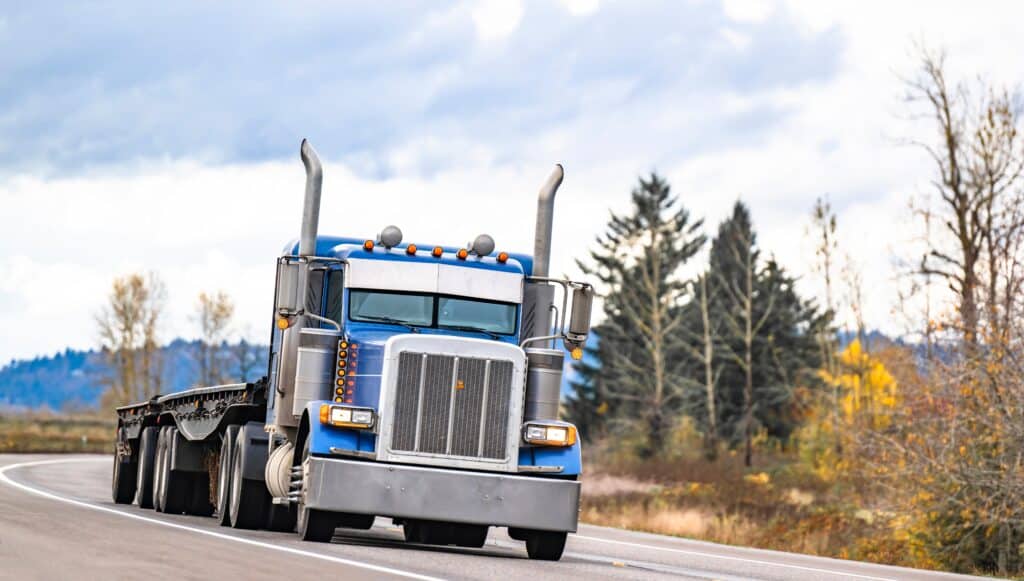
Passing Roadside Inspections: ELD Best Practices
Roadside inspections are a routine part of commercial driving. With proper preparation, you can navigate them confidently and efficiently.
What Inspectors Focus On
When an officer asks to examine your logs during a roadside inspection, they generally look for:
- Current duty status. Inspectors will verify that your logged status matches your actual activity.
- Records of duty status. Officers will review logs for the current day plus previous 7 days.
- Unassigned driving time. Any unrecorded driving time associated with your vehicle will be discussed.
- Supporting documents. Inspectors may request documents like fuel receipts that correspond to your logs.
Pre-Inspection Preparation
Taking these basic steps before hitting the road can help ensure a smooth inspection:
- Check your ELD system daily. Take a moment each day to verify your device is functioning properly.
- Keep required documents handy. Store your ELD manual and instruction card in an easily accessible location.
- Know how to transfer logs. Practice using both primary and backup methods for transferring your logs electronically.
- Maintain blank paper logs. Keep a supply of blank paper logs as required by regulations in case of device malfunction.
Professional Conduct During Inspections
Your approach during the inspection itself matters:
- Stay professional and courteous. A positive attitude often sets the tone for the entire interaction.
- Know your device functions. Be familiar with how to display your logs and perform basic ELD operations.
- Ask clarifying questions when needed. If you don’t understand what’s being requested, politely ask for clarification.
If Your ELD Malfunctions
If your device fails:
- Note the malfunction on a paper log.
- Notify your carrier within 24 hours.
- Reconstruct logs for the current day and previous 7 days.
- Continue using paper logs until the ELD is fixed.
- Get the ELD repaired within 8 days.
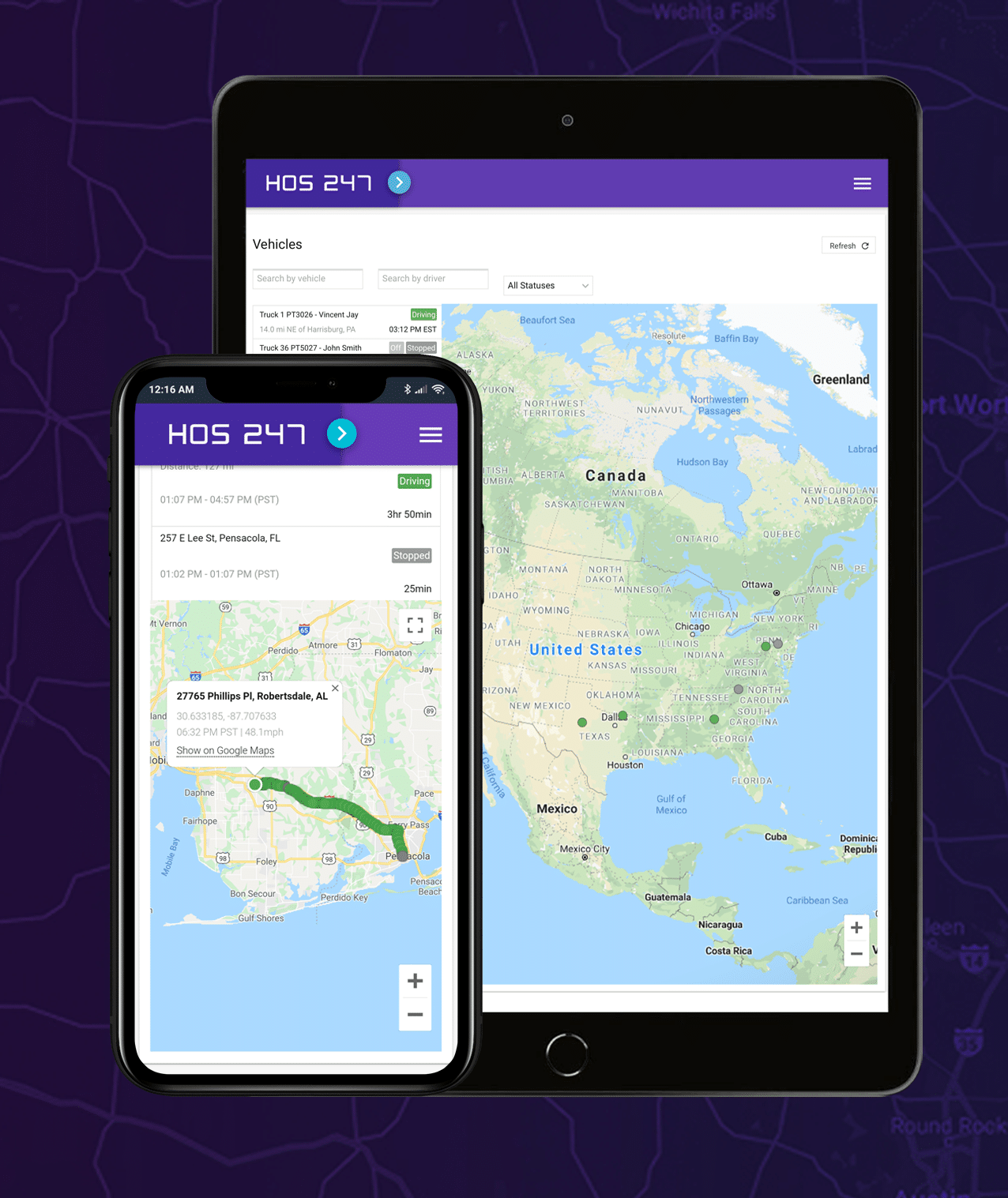
ELD ROI Calculation: Is Upgrading Worth It?
Switching to a better ELD involves costs, but often delivers significant returns. Here’s how to calculate if upgrading makes financial sense for your operation.
Upfront Costs
Consider these initial expenses:
- Hardware purchase or deposit.
- Installation time (hours x your hourly earnings).
- Training time.
- Potential early termination fees from your current provider.
- Administrative time to transfer records.
Potential Savings
A quality electronic logbook can save you money through:
Reduced Violations
- Fewer form and manner violations ($1,000+ per citation).
- Fewer HOS violations ($1,000-$15,000 per citation).
- Lower risk of out-of-service orders (lost revenue).
Increased Efficiency
- Less time managing logs.
- Fewer technical issues.
- More driving time with accurate logs.
- Less stress leading to better focus and safety.
Administrative Benefits
- Automated IFTA calculations.
- Simplified record keeping.
- Easier compliance with audit requests.
Beyond Compliance
Better ELDs offer features that add value:
- GPS tracking that improves dispatch efficiency.
- Fuel optimization tools that can save on operational costs.
- Fault code detection that prevents costly breakdowns.
- Maintenance tracking that expands vehicle lifespan.
Safety and Insurance Benefits
Quality ELDs can improve safety records, which may lead to:
- Reduced insurance premiums.
- Fewer accidents due to better hours management.
- Improved CSA scores leading to better business opportunities.
- Lower recruitment costs due to better driver satisfaction and retention.
Sample ROI Calculation
For a single truck operation:
- Cost: $500 initial + $25/month = $800 first year.
- Savings: 20 minutes/day in log management = 120 hours/year.
- Value: 120 hours × $30/hour driving wage = $3,600/year.
- Additional value: One avoided violation = $1,000.
- Total first-year ROI: $3,800 benefit – $800 cost = $3,000 net positive.
Conclusion: Making the Switch to a Better ELD
The right electronic logbook does more than just keep you compliant — it makes your job easier and your business more profitable. While the ELD mandate requires electronic logging, it doesn’t mean you have to settle for a system that causes constant problems.
Quality logs for trucks, like our HOS247 ELD solution, offer the reliability, ease-of-use, and responsive support that professional drivers deserve. By upgrading to a better system, you can reduce stress, save valuable time, and prevent costly violations.
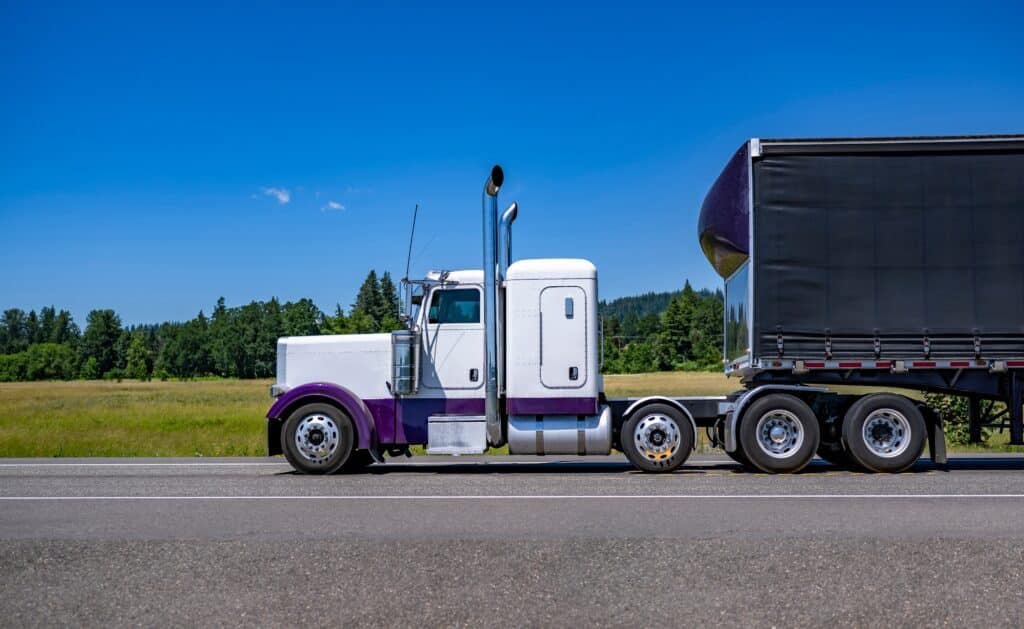
When evaluating your options, look beyond the monthly fee. Consider the full value of fewer violations, reduced downtime, less paperwork, and improved efficiency. For most drivers and fleets, investing in a reliable solution delivers significant returns through improved operations and peace of mind.
Ready to experience a better elogs experience? Contact us today to learn how HOS247 can improve your trucking operation with our driver-friendly ELD solution.

As an expert in B2B and B2C sales, I’ve dedicated myself to perfecting sales processes and client retention strategies in the logistics and trucking industry. I have significantly contributed to the expansion of the ELD service, catering to retail and wholesale clients in need of HOS247 ELD solutions. My unwavering commitment to implementing state-of-the-art sales techniques and technologies ensures the continuous growth and success of businesses I work with.











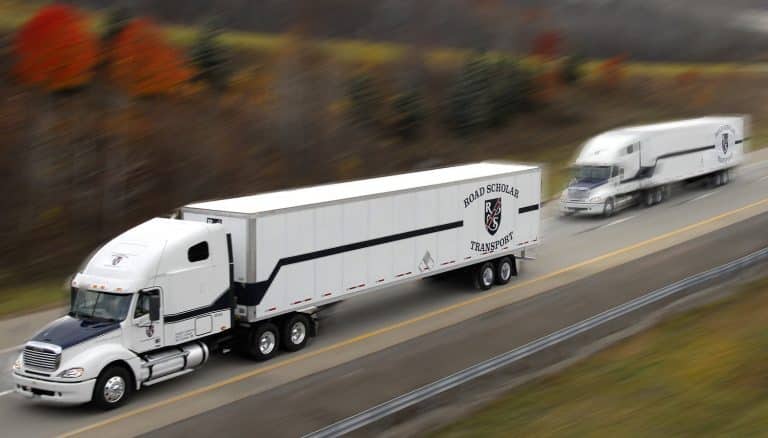
In order to keep everyone on the road safe, the Federal Motor Carrier Safety Administration (FMCSA) regulates commercial drivers’ drive time and rest periods. As such, the owners of commercial trucking fleets have a legal obligation to make sure their

In the trucking industry, having a reliable and efficient electronic logging device (ELD) is essential for maintaining compliance and streamlining operations. As technology advances and regulations evolve, it’s crucial for trucking companies to regularly evaluate their current electronic logbook systems
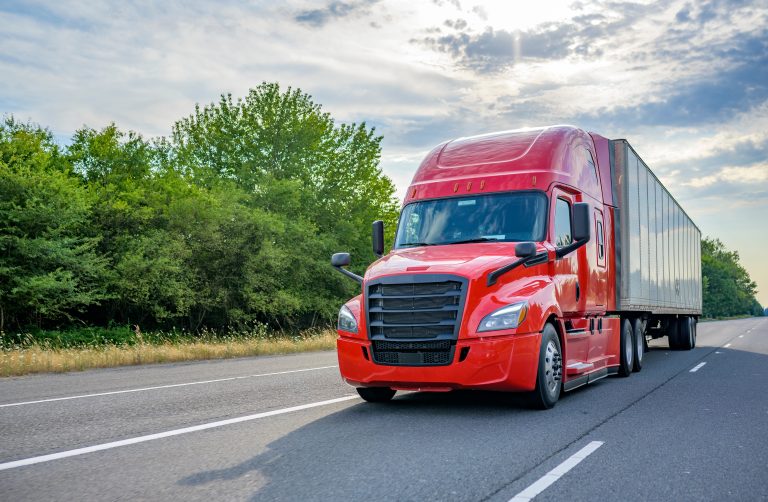
The ability to monitor vehicles in real time is a major benefit to fleet managers. When able to view location data, speed, a driver’s idle time and more, fleet managers can make real-time decisions that benefit the business as a